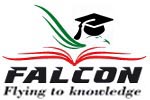Project Description
Why Attend
It has been known for millennia that people with certain occupations, such as miners, incurred diseases of the lungs and respiratory system. Today we know that many of these effects were not only induced by fine particles and toxic metals but also by carbon monoxide. Radon gas also was one of the contributing factors to miners’ lung disease from the 15th through the 20th centuries in the Erzgebirg Mountains in central and eastern Germany.
Emissions from cooking, heating, and fires in general were also well known. Apart from nature, the sources of contamination were simple solid fuels and metal working operations. Odours also were a part of common life. The common approach to air quality management was to stay out of “bad air” (mal aria), or out of areas in which refuse, garbage, and human corpses were deposited in ancient times.
Only in the last decades of the 20th and the first decade of the 21st century have air quality management strategies taken hold. In the last 30 years, there have been significant reversals in earlier air quality trends from increasingly poor air quality to increasingly healthy air quality. This change has come about as a result of dedicated people and of societal decisions to pursue clean air as a priority. Most significant, this change has come at a time when the worldwide population has been increasing.
Air quality models use mathematical and numerical techniques to simulate the physical and chemical processes that affect air pollutants as they disperse and react in the atmosphere. Based on inputs of meteorological data and source information like emission rates and stack height, these models are designed to characterize primary pollutants that are emitted directly into the atmosphere and, in some cases, secondary pollutants that are formed as a result of complex chemical reactions within the atmosphere. These models are important to our air quality management system because they are widely used by agencies tasked with controlling air pollution to both identify source contributions to air quality problems and assist in the design of effective strategies to reduce harmful air pollutants. For example, air quality models can be used during the permitting process to verify that a new source will not exceed ambient air quality standards or, if necessary, determine appropriate additional control requirements. In addition, air quality models can also be used to predict future pollutant concentrations from multiple sources after the implementation of a new regulatory program, in order to estimate the effectiveness of the program in reducing harmful exposures to humans and the environment.
The course takes an in-depth look at the fundamentals of air pollution modelling: from a review of air pollution meteorology, to an introduction to Gaussian plume models; from a discussion of plume rise formulations, to a review of Eulerian grid models. With individual sections, this course gives environmental professionals a solid foundation for understanding modelling techniques using both semi-empirical formulations and well-established atmospheric science.


Course Objectives
Students successfully completing this course will be able:
- Understand the basic principle of pollution meteorology
- Know in depth the air dispersion modelling theory with practical examples
- Able to define and understand the Dispersion parameters, Plume rise and Meteorological data
- Select dispersion models appropriate to particular problems in air quality impact analysis, apply recommended models, and judge the validity of the models’ output.
- Executing specific models for selected scenarios
- Selecting the appropriate air quality model • Special meteorological situations and model options
- Modelling complex terrain situations and hazardous/toxic pollutants
- Compare the various EPA’s Air Quality Models & and other air dispersion models
Who should attend
This course is ideal for those who are involved in environmental management and technology including managers, engineers, supervisors, officers, researchers, coordinators and specialists.
Course Outline
- Structure and composition of the atmosphere
- Fundamental concepts of atmospheric thermodynamic
- The winds at the planet’s surface
- Atmospheric Pressure and Pressure Gradient Force
- Coriolis Force
- Frictional Force
- Centrifugal Force and Gradient wind
- The scales of the atmospheric motion
- Planetary Scale Circulation
- Large-Scale Circulationsg
- Estimates of atmospheric dispersion
- Diffusion equations
- The Gaussian Distribution
- Estimation of Vertical and Horizontal Dispersion
- Effects of Stability
- Calculation of Maximum Ground-Level Concentrations
- Effective Height of Emission and Maximum Concentration
- Estimates of Required Stack Heights
- Effect of Evaporative Cooling
- Concentrations in an Inversion Break-up Fumigation
- Plume Trapping
- Concentrations at Ground Level Compared to Concentrations at the Level of Effective Stack Height from Elevated Continuous Sources
- Meteorological Conditions Associated with Maximum Ground-Level Concentrations
- Concentrations at a Receptor Point from Several Sources
- Refined air quality models
- Screening Tools
- EPA models

The workshop
This interactive training course includes the following training methodologies as presented on the next column based on percentage of the total tuition hours:
Lectures
Workshops & Work presentation
Case Studies & Practical Exercises
Videos, Sofware & General Discussion
The course instructor may modify the above training methodology before or during the course for technical reasons with no prior notice to participants.
Falcon Consulting Professionals is established in Greece for the last 15 years in the areas of technical consulting and professional training for the local industries. Falcon is expanding in GCC, aiming to provide the best consulting and training solutions to the industries of the region. Falcon’s instructors are accredited trainers and highly experienced in their fields, as well as adult training. We aspire to build our business relationships on mutual trust. The achievement of results with an emphasis on innovation and sustainability, quality, cost analysis and time scheduling are non-negotiable from the conceptual phase of the training.

